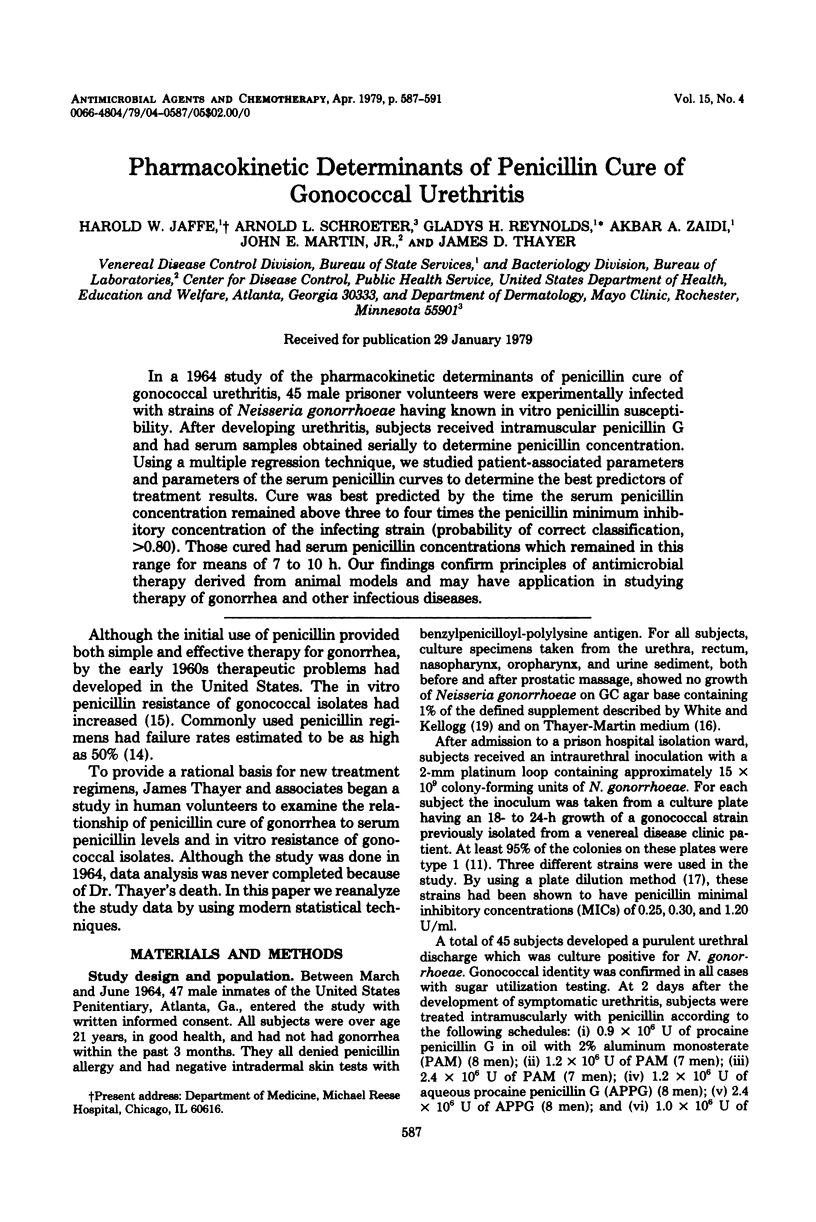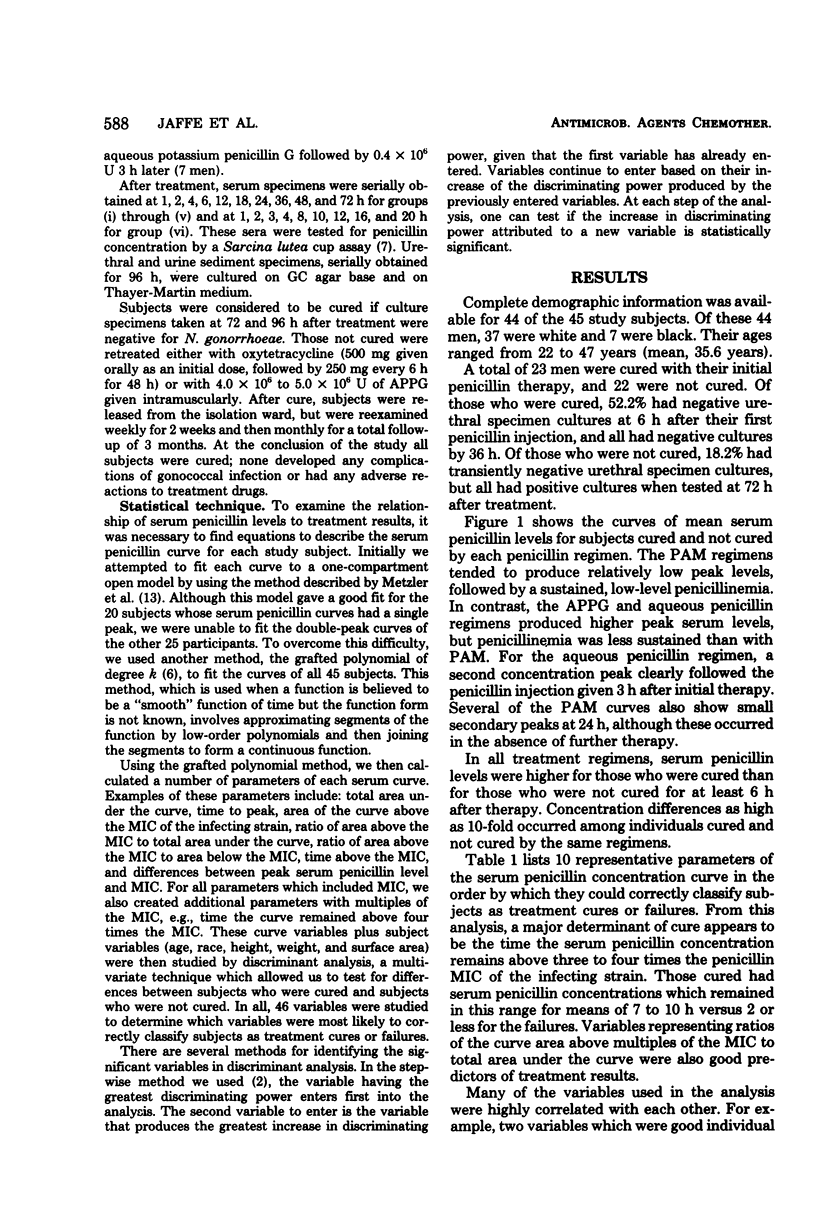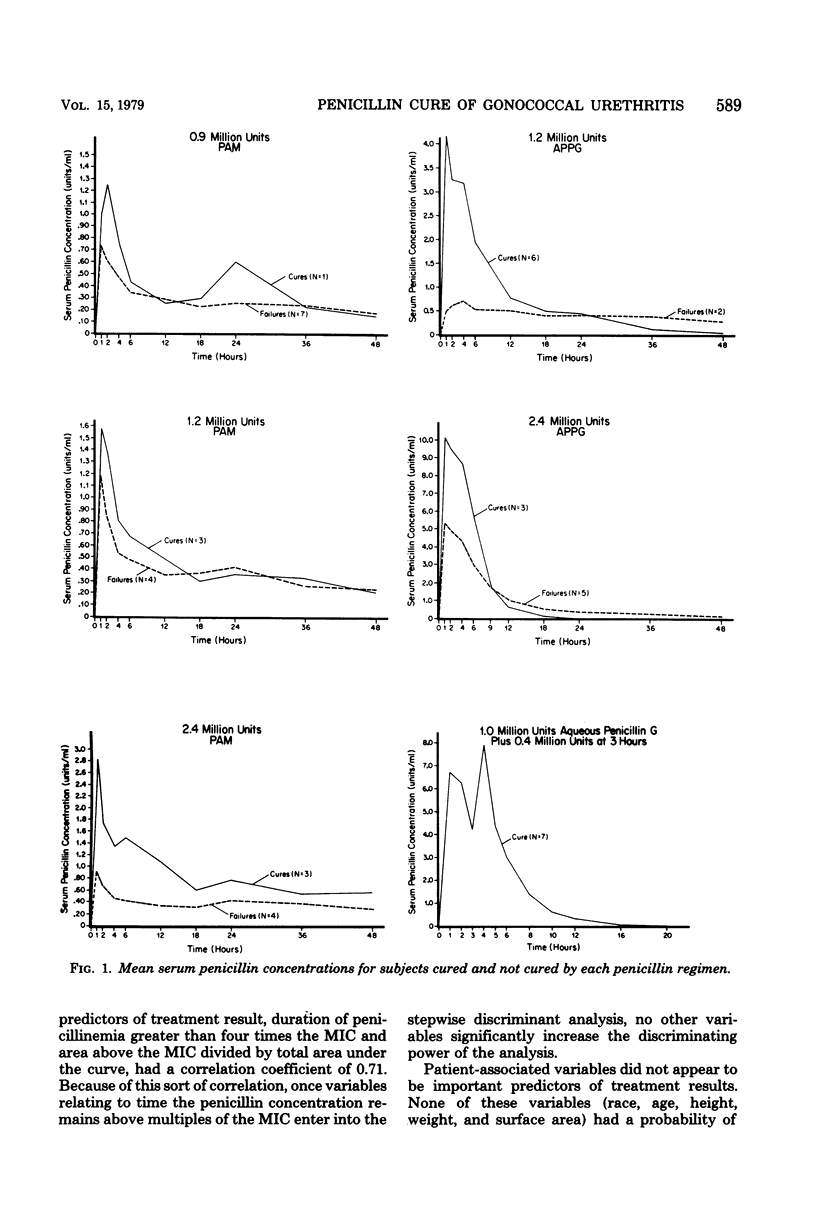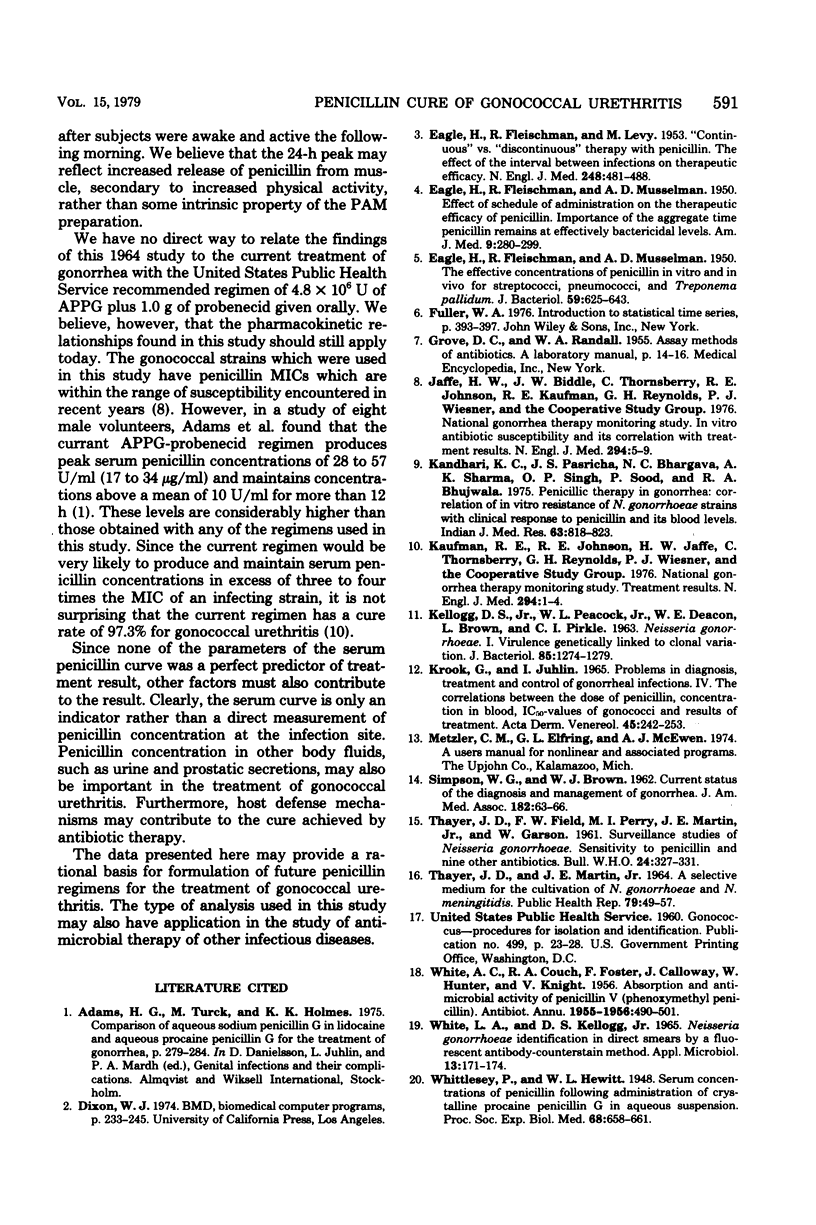Abstract
In a 1964 study of the pharmacokinetic determinants of penicillin cure of gonococcal urethritis, 45 male prisoner volunteers were experimentally infected with strains of Neisseria gonorrhoeae having known in vitro penicillin susceptibility. After developing urethritis, subjects received intramuscular penicillin G and had serum samples obtained serially to determine penicillin concentration. Using a multiple regression technique, we studied patient-associated parameters and parameters of the serum penicillin curves to determine the best predictors of treatment results. Cure was best predicted by the time the serum penicillin concentration remained above three to four times the penicillin minimum inhibitory concentration of the infecting strain (probability of correct classification, >0.80). Those cured had serum penicillin concentrations which remained in this range for means of 7 to 10 h. Our findings confirm principles of antimicrobial therapy derived from animal models and may have application in studying therapy of gonorrhea and other infectious diseases.
Full text
PDF




Selected References
These references are in PubMed. This may not be the complete list of references from this article.
- CALLOWAY J., COUCH R. A., FOSTER F., HUNTER W., KNIGHT V., WHITE A. C. Absorption and antimicrobial activity of penicillin V (phenoxymethyl penicillin). Antibiot Annu. 1955;3:490–501. [PubMed] [Google Scholar]
- EAGLE H., FLEISCHMAN R., LEVY M. "Continuous" vs. "discontinuous" therapy with penicillin; the effect of the interval between injections on therapeutic efficacy. N Engl J Med. 1953 Mar 19;248(12):481–488. doi: 10.1056/NEJM195303192481201. [DOI] [PubMed] [Google Scholar]
- EAGLE H., FLEISCHMAN R., MUSSELMAN A. D. Effect of schedule of administration on the therapeutic efficacy of penicillin; importance of the aggregate time penicillin remains at effectively bactericidal levels. Am J Med. 1950 Sep;9(3):280–299. doi: 10.1016/0002-9343(50)90425-6. [DOI] [PubMed] [Google Scholar]
- EAGLE H., FLEISCHMAN R., MUSSELMAN A. D. The effective concentrations of penicillin in vitro and in vivo for streptococci, pneumococci, and Treponema pallidum. J Bacteriol. 1950 May;59(5):625–643. doi: 10.1128/jb.59.5.625-643.1950. [DOI] [PMC free article] [PubMed] [Google Scholar]
- KELLOGG D. S., Jr, PEACOCK W. L., Jr, DEACON W. E., BROWN L., PIRKLE D. I. NEISSERIA GONORRHOEAE. I. VIRULENCE GENETICALLY LINKED TO CLONAL VARIATION. J Bacteriol. 1963 Jun;85:1274–1279. doi: 10.1128/jb.85.6.1274-1279.1963. [DOI] [PMC free article] [PubMed] [Google Scholar]
- Kandhari K. C., Pasricha J. S., Bhargava N. C., Sharma A. K., Singh O. P., Sood P., Bhujwala R. A. Pencillin therapy in gonorrhoea: correlation of in vitro resistance of N. gonorrhoeae strains with clinical response to penicillin and its blood levels. Indian J Med Res. 1975 Jun;63(6):818–823. [PubMed] [Google Scholar]
- Krook G., Juhlin I. Problems in diagnosis, treatment and control of gonorrheal infections. IV. The correlation between the dose of penicillin, concentration in blood, IC-50-values of gonococci and results of treatment. Acta Derm Venereol. 1965;45(3):242–253. [PubMed] [Google Scholar]
- SIMPSON W. G., BROWN W. J. Current status of the diagnosis and management of gonorrhea. JAMA. 1962 Oct 6;182:63–66. [PubMed] [Google Scholar]
- THAYER J. D., FIELD F. W., PERRY M. I., MARTIN J. E., Jr, GARSON W. Surveillance studies on Neisseria gonorrhoea sensitivity to penicillin and nine other antibiotics. Bull World Health Organ. 1961;24:327–331. [PMC free article] [PubMed] [Google Scholar]
- THAYER J. D., MARTIN J. E., Jr A SELECTIVE MEDIUM FOR THE CULTIVATION OF N. GONORRHOEAE AND N. MENINGITIDIS. Public Health Rep. 1964 Jan;79:49–57. [PMC free article] [PubMed] [Google Scholar]
- WHITE L. A., KELLOGG D. S., Jr NEISSERIA GONORRHOEAE IDENTIFICATION IN DIRECT SMEARS BY A FLUORESCENT ANTIBODY-COUNTERSTAIN METHOD. Appl Microbiol. 1965 Mar;13:171–174. doi: 10.1128/am.13.2.171-174.1965. [DOI] [PMC free article] [PubMed] [Google Scholar]


